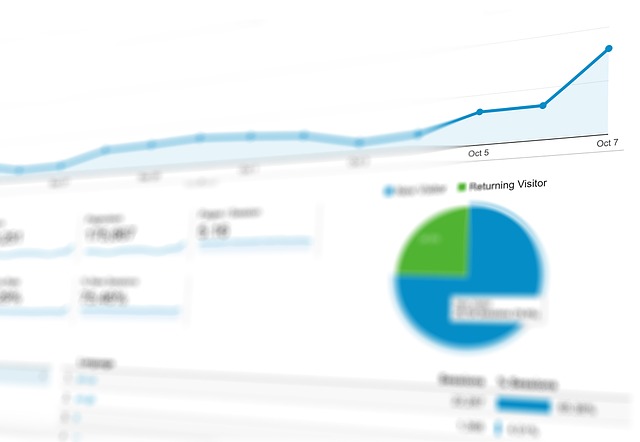Though the title sounds like another round of buzzword bingo, actionable analytics, data-driven and data-informed are concepts which shape businesses and organizations in very real ways. They’re new words for old ideas made feasible. Companies are constantly trying to get leaner and more effective to drive down the bottom line and drive up the profit margin. It’s easier now than ever to collect a massive amount of data, but it’s still hard to know what to do with it when you get it.
What Does It Mean to Be Data-Driven or Data-Informed?

With businesses trending for more sustainability, better automation, and better analytics, more and more companies are trying to become data-driven. Data-driven just means that decisions are based on data rather than intuition or common sense. This is for better or for worse depending on the approach.
A data-driven organization focuses on using analytics and data gathering in order to plan and implement policies based entirely on analytics. They look for trends in the data and try to optimize for these trends. If a potential customer puts something in their cart, but you send an email when they abandon it, does it help or hurt your sales? This is great data to have for streamlining operations. If a test case shows that changing a color changes the result, they will change the color without considering the human elements (e.g. does it match the brand?).
Using a data-driven approach means processes are based purely on data which is an important distinction from data-informed. Data-informed organizations use data to shape processes and provide feedback. Data-informed organizations tend to be more organic, but may not shape processes as fully as they could in an ideal, data-driven environment.
Your whole process is only as good as the data you are using, so you must shape it and collect it properly or you’re basing your strategy on garbage. If the data is good and reliable, and the analytics are practical, a data-driven approach can be extremely effective. If the data is not reliable or the analytics are not sound, a data-driven approach will be worse than a data-informed approach for process creation, but neither will be particularly effective.
What Are Actionable Analytics?
In order to use a data-driven or data-informed approach, you have to have data and a way to analyze and make sense of the data. Actionable analytics are analytics based on data shaped to make them able to be acted on in some way. In our previous example of an online store, the data regarding what happens when a potential customer abandons their cart can become an actionable analytic point. By knowing what customers do, you can target how to retain them as customers.
Actionable analytics depend entirely on good data and factor in heavily to a data-driven approach. You have to ask the right questions the right way to get truly actionable analytic points. If you find that the average user who abandons their cart is on mobile, does that mean that mobile users are more likely to abandon their cart or is it just coincidence? Is there a correlation only, or a causation effect? Is the site hard to use on mobile or is it just coincidence?
Ask the right questions the right way and a data-driven or data-informed approach will be substantially more effective.
How Are Actionable Analytics Created?
The first step to any kind of analytic process is to make the data useful. The data must be understood before it can tell us anything besides “we have data”.
How do you shape data? What can it tell us? Is it useful? What does it even mean? All of these mean nothing without being approached the right way. Data needs to be filtered, sorted, and understood before it can impact anything without raw luck. Bad data needs to be thrown out. Relationships differentiating the cause and correlation of data points have to be analyzed. It takes a massive amount of work to turn most data into something actionable.
Once we actually know what we have, we can see whether it tells us what we want to know. Why was the data collected? What are your business goals? What are you hoping to fix? Once you answer these questions, you can use the data to set metrics for success and failure for these questions as long as your data is sound. Are your customers dropping out somewhere in the conversion process? You can’t act on this until you know where and why.
By understanding the data and the context for the data, you can set metrics and benchmarks rooted in real data. You then know what is a definitive success and what isn’t. If you make a change, you can know if it is having the effect it should or not and react accordingly. Actionable analytics allow you to create an objective way to measure failure and success in the context of your goals.
How Do Analytics Relate to Data-Driven and Data-Informed Approaches?
Data-driven and data-informed use the same general concept that data should shape the process, but the difference is that a data-driven approach uses data to make the process, and a data-informed approach uses data to shape the process or provide feedback on it. Both approaches are valid, but require differing levels of commitment to data collection and analytics.
Proper analytics can tell you when it is cost effective to automate or when it is is worth moving into the cloud and what option is best. It’s easy to miss a common problem if you can’t see it, and it’s easy to miss the mark when you didn’t know there was one.
Conclusion
Good analytics can tell you when a strategy has worked or fallen short, but more importantly why. It’s not just enough to succeed, you need to understand why or it may as well be a fluke. You’re doomed to repeat the same mistakes or miss the underlying reason if you don’t know why something works or doesn’t.
Businesses and other organizations are trending towards leaner, more agile models based in real data using actionable analytics. The underlying philosophy can be data-driven or data-informed, but either way, data is king. Know how to use it and why and you can make more informed decisions. Fail to adapt and you’ll be unable to keep up.
Featured image by rawpixel from Pixabay



